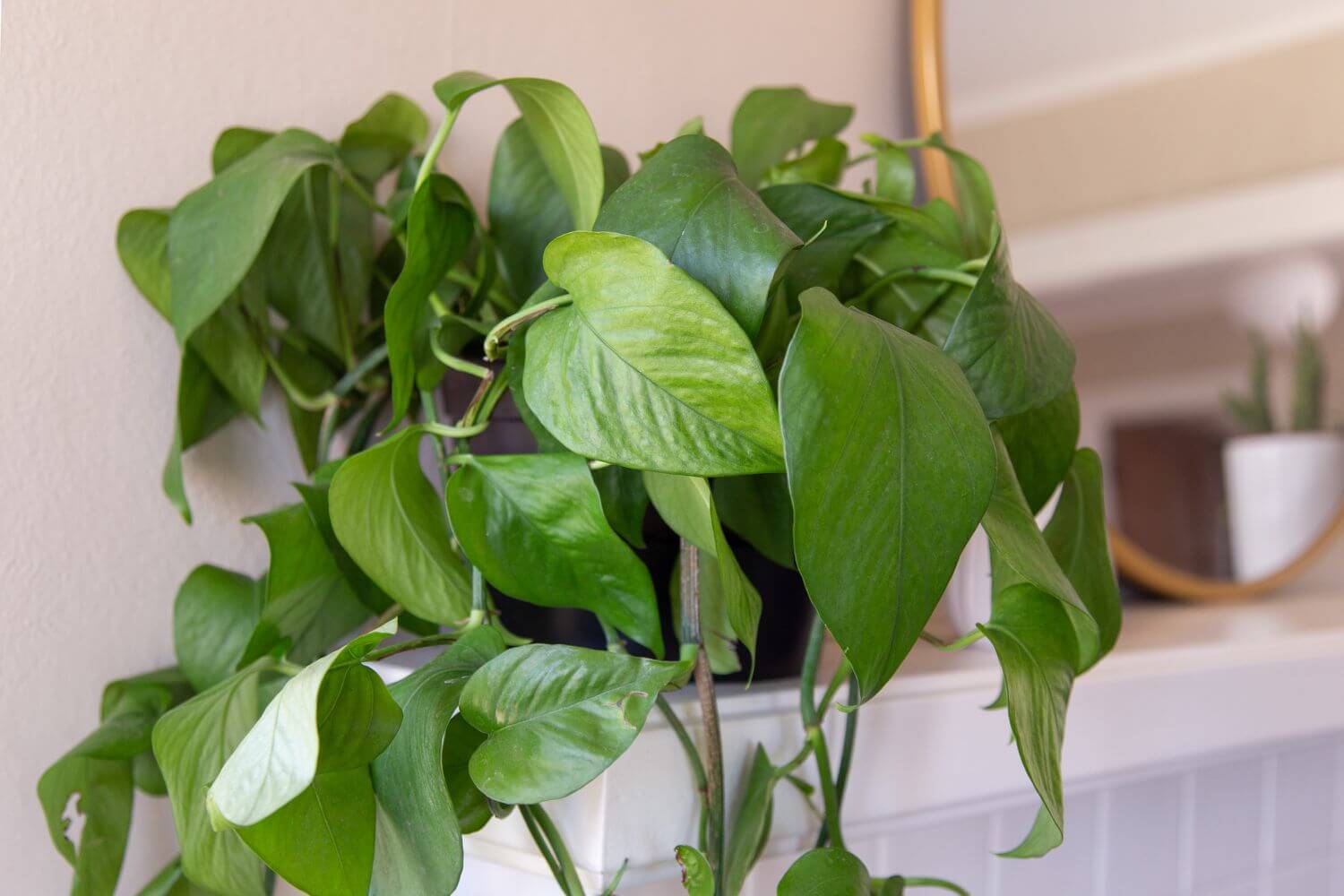
Jessenia pothos is a relatively recent addition to the pothos family, characterized by its green leaves delicately streaked with chartreuse or light green variegation. This trailing tropical plant has gained popularity as a favored houseplant, thriving in low light conditions, various well-draining soils, and typical indoor humidity levels.
Care Guide for Jessenia Pothos
Light Requirements
Optimal growth for Jessenia pothos is achieved in partial sunlight or bright, indirect light. Avoid exposing it to direct sunlight, which can lead to leaf burns and dull its variegation. While it can tolerate medium light conditions, low light should be avoided as it may cause the variegation to fade.
Soil Preparation
Prepare a well-draining soil mixture that retains some moisture. A blend of potting soil, perlite, and orchid bark mix is recommended to prevent soil compaction and ensure proper drainage. While Jessenia pothos can survive in pure potting soil, the ideal soil composition promotes healthier growth.
Watering Regimen
Water Jessenia pothos thoroughly but allow the top 2 to 3 inches of soil to dry out before watering again. These plants are relatively drought-tolerant and can withstand occasional missed waterings. Reduce watering frequency during the plant’s dormant period in fall and winter.
Temperature and Humidity
Native to tropical climates, Jessenia pothos thrives in warm, humid conditions. Maintain temperatures between 65 to 75 degrees Fahrenheit (18 to 23 degrees Celsius) and humidity levels of 50% to 70% to promote optimal growth and vitality.
Fertilization Routine
Apply a balanced liquid fertilizer monthly during the active growing season in spring and summer. Follow the product label instructions for proper dosage. Suspend fertilization during the plant’s dormant phase in fall and winter to prevent nutrient buildup.
Pruning Practices
While not mandatory, periodic pruning can help control growth and promote a fuller appearance. Use sharp pruning shears or scissors to trim back overgrown foliage, ensuring not to remove more than one-third of the plant’s foliage at a time. Pruning is ideally done during the spring or summer when the plant is actively growing.
Propagation Techniques for Jessenia Pothos
Jessenia pothos can be propagated through stem cuttings, preferably during the spring or summer months when the plant is actively growing. Each cutting should contain at least one node, where new roots and leaves emerge. Follow these steps to propagate Jessenia pothos successfully:
Prepare Stem Cuttings
Using clean pruning shears, take stem cuttings with 2 to 4 nodes and leaves from a healthy Jessenia pothos plant.
Rooting Process
Remove the bottom 1 to 2 leaves from each cutting and place them in a container filled with water. Ensure that the bare stems are submerged while the remaining leaves are above the water surface.
Root Development
Position the cuttings in a well-lit area with bright, indirect light and change the water weekly to maintain freshness. After a few weeks, roots should begin to develop from the submerged nodes.
Potting the Cuttings
Once the roots are 2 to 3 inches long, transplant the cuttings into small pots filled with well-draining soil. Keep the soil consistently moist during the initial establishment period.
Potting and Repotting Guidelines
Repot Jessenia pothos every 1 to 2 years or when it outgrows its current container. Choose a pot 2 to 3 inches larger than the previous one and ensure it has adequate drainage holes. Use fresh, well-draining soil and water the plant thoroughly after repotting.
Common Pests and Diseases
Jessenia pothos is susceptible to common houseplant pests such as mealybugs, scale, thrips, and spider mites. Additionally, overwatering can lead to root rot, so it’s essential to monitor soil moisture levels and avoid waterlogged conditions.
Common Problems and Solutions
Yellow Leaves
Yellowing leaves may indicate overwatering, underwatering, or insufficient light. Adjust watering frequency and ensure the plant receives adequate bright, indirect light for optimal growth.
Brown Leaves
Brown leaves typically result from insufficient moisture. Maintain consistent watering practices, ensuring the top 2 to 3 inches of soil remain slightly moist.
Stunted Growth
If Jessenia pothos exhibits stunted growth, inadequate light exposure is often the cause. Provide several hours of bright, indirect light daily to stimulate healthy growth. Regular fertilization during the growing season can also encourage vigorous growth.
Jessenia pothos leaves may revert to solid green if exposed to low light conditions. Increasing light exposure can prevent further leaf reversion.
Among pothos varieties, Jessenia pothos is considered rare and may be challenging to find. Its scarcity contributes to its popularity among plant enthusiasts and collectors.
Mimic the plant’s native tropical rainforest environment by providing temperatures between 65 and 75 degrees Fahrenheit, humidity levels of 50% to 70%, and bright, indirect light resembling sunlight filtering through a rainforest canopy.